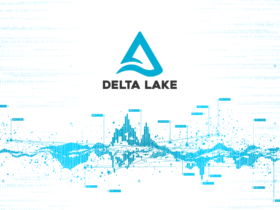Airflow for ETL jobs
Extract, Transform, and load (ETL) operations are what forms the backbone of an enterprise data lake. Enabling the extraction of data from multiple sources and transforming the data as per the business needs and writing the results into the desired target location is what is primarily achieved.
Apache Airflow is one of the workflow engines which enables managing, scheduling, and running jobs and data pipelines. It ensures jobs are ordered correctly based on the depe ndencies. It ensures in managing the allocation of scarce resources. It also provides mechanisms to track the state of the jobs and to recover them from failure. Being a very versatile tool, it supports many domains like growth analysis, search ranking, data warehousing, engagement analytics, infrastructure monitoring, anomaly detection, email targeting and data exports.
ndencies. It ensures in managing the allocation of scarce resources. It also provides mechanisms to track the state of the jobs and to recover them from failure. Being a very versatile tool, it supports many domains like growth analysis, search ranking, data warehousing, engagement analytics, infrastructure monitoring, anomaly detection, email targeting and data exports.
Few of the basic concepts of Airflow include:
- Task: Also called operators in Airflow, it is a defined unit of work.
- Task Instance: Indicates the state of a task. The different states include “running”, “success”, “failed”, “skipped”.
- Directed Acyclic Graph: Is a set of tasks with explicit order, beginning and end.
- DAG run: individual execution or run of a DAG.
The Airflow architecture is composed of four components:
- Webserver: This is a GUI with a Flask app under it where one can track the status of the jobs and allows you to read logs from a remote file store.
- Scheduler: As the name goes by, this component schedules the jobs by using a multithreaded Python process that uses the DAG object to decide which task must be run when and where. The task state is updated from the database accordingly and the web server uses these saved states to display job information.
- Executor: The component where the task gets done.
- Metadata database: Stores all the Airflow states, it controls the other components interact and all the processes are read and written from here.
This modular architecture of Airflow can be scaled to infinity as it uses a message queue to orchestrate an arbitrary number of workers. It is also easily extensible as we can define our own operators and extend libraries to fit the level of abstraction to suit the environment. The Airflow pipelines are defined in Python and thus it allows to instantiate pipelines dynamically by coding.
Few of the prominent features of Airflow include:
- Use of Python: Python is the main language used to create workflows, to include date and time format for scheduling and loops to dynamically generate tasks. This allows extreme flexibility.
- UI: Monitoring, scheduling, and managing the workflow using a modern web application interface. The interface allows full insight into the status and completed logs and of the ongoing tasks.
- Flexible usage: Since the workflows are written in Python, the scope of the Airflow pipelines can be extended using Python and is easier to implement ML models, transfer data and manage the infrastructure.
- Integrations: Airflow comes with plug-and-play operators. This leverages the use of Google Cloud Platform, Amazon Web Services, Microsoft Azure, and other third-party services.
#RandomTress #AirFlow #ETL







